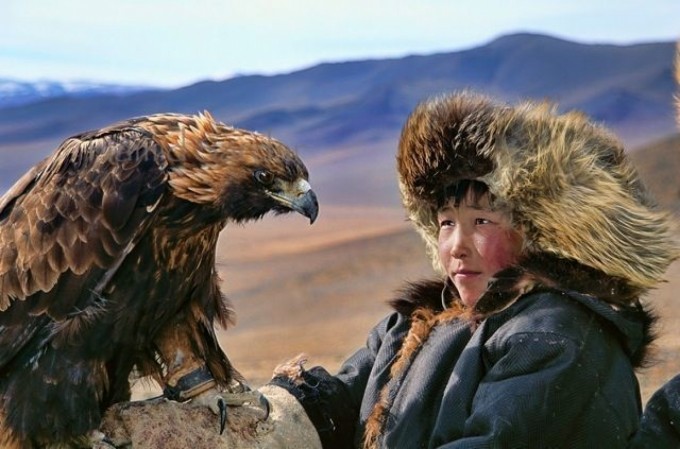Since the start of our species, human civilization has gone a long way. Humans have risen from caves and uninhabited regions to create cities and residences that previous generations could never have dreamed.

The development of globalization has made it more difficult to preserve old civilizations. This is what makes Mongolia’s Dukha people so interesting and remarkable. For ages, the nomadic tribe has resided in the same area. They formed an unusual bond with the wild creatures during this period. In fact, this relationship is so incredible that it will take your breath away.

Luckily for us, photographer Hamid Sardar-Afkhami recently visited this long-lost tribe and recorded his discoveries in a series of breathtaking images. The Dukha people have created a special relationship with surrounding reindeer as a result of their distinct culture. They employ them as a means of transportation to get around the dangerous terrain they live in.

Mongol, a Central Asian ethnographic group of closely related tribal peoples who reside mostly on the Mongolian Plateau and share a shared language and nomadic culture. Their homeland is presently divided between Mongolia (Outer Mongolia), an independent nation, and China’s Inner Mongolia Autonomous Region. Mongols can be found all across Central Asia as a result of battles and migrations.

With a few exceptions, the Mongol social structure, economy, culture, and language have remained remarkably stable throughout centuries. They were essentially nomadic pastoralists who were excellent riders and wandered over Central Asia’s huge grasslands with their herds of sheep, goats, cattle, and horses.

Family, clan, and tribe were the foundations of traditional Mongol society, with clan names drawn from common male ancestors. The tribal name was derived from the strongest clan when clans combined. Weaker clans kept their own headmen and cattle in the tribe, but they were subordinate to the strongest clan. Khans (Mongol kings) gave commanders to districts from which troops and taxes were gathered during periods of tribal unity. Throughout Mongol history, there were times of tribal struggle and periods of tribal stability.

“They’re definitely a disappearing culture,” says Hamid Sardar-Afkhami, a Harvard-trained anthropologist. Sardar estimates there were originally around 200 people living in this isolated section of Mongolia, according to Sardar, who spent years living with the Dukha and recording their way of life. He estimates that just approximately 40 families with 1,000 reindeer remain now.

“The number of families has decreased since many have integrated into the mainstream population,” he adds. “Many of them have moved to cities, including major cities.” The greatest concern, according to Sardar-Afkhami, is the departure of the younger Dukha generation, who do not want to live in the hard taiga (or “snow forest”) circumstances. “In the winter, they want to travel down and stay in heated cottages, perhaps purchase a car and drive,” he adds. The contemporary life has a lot of charm. The difficulties of the traditional reindeer herder’s lifestyle are undoubtedly a factor. “ The increase of gold mining in the area, as well as government restrictions on the Tsaatan’s hunting grounds, has accelerated the decline.

The Tsaatans’ hunting grounds were named a national protected park by the government. He claims that it is now off-limits and that they are unable to hunt there. According to Sardar-Afkhami, each household was compensated with around $150. It’s a total bummer since these are traditional hunters, and the reindeer must travel. You’re killing a part of their culture when you pay them off like that. To make matters worse for the Dukhas, the number of reindeer on which they depend has plummeted because of illnesses and a lack of medical interventions.

All of these issues have driven some Dukha to rely on tourism for their livelihood. “Tourism is becoming a primary source of income,” adds Sardar-Afkhami. “Tourists bring in a lot of money for them.” For some years, tour operators have routinely included a visit to a Dukha community as part of a Mongolian itinerary.


The reindeer, in particular, have been a major attraction with visitors, who are willing to spend 5,000 Mongolian Tugrik ($2.50) for a one-time picture opportunity. Based on the amount of buses that come and leave, the clan could easily generate $200 each day on average.

This is a significant sum of money in Mongolia, where the typical worker makes about $330 each month. However, some visitors are concerned that the reindeer are being used to attract tourists, and their efforts have faced criticism. So much so that certain tour agencies, like as Intrepid Travel in Melbourne, Australia, now advise not visiting the tribe.

However, getting to their rural habitat necessitates advanced horseback riding abilities as well as days of traveling on a hard path, which many visitors are not prepared for that. As a result, a small group of reindeer herders has gone from their customary herding grounds and set up camp near the popular Lake Khovsgol tourist regions. A tribe of around a dozen members, led by Enkhatuya, who is also the head shaman, offers guests a taste of the Dukha culture without having to go far into the larch forest. Enkhatuya acknowledges that life has become more difficult for her people. She continues, “This is the major reason we come down to Lake Khovsgol every summer.” “We need to make enough money to get through the winter.”







